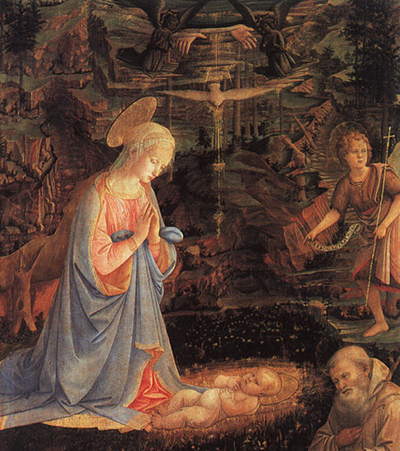When it comes to the use of perspective in art, there is no one more well-known than the Italian painter, Paolo Uccello. His use of perspective in art aided the growth of the new Renaissance style. It was the inspiration for many other artists who came after him.
Named Paolo di Dono, he was born in 1397 in Pratovecchio near Florence, Italy. His father was Dono di Paolo, a surgeon/barber. His mother was Antonina di Gio. In 1453 records show him married to Tommasa Malifici. His son, Donato, named after his friend Donatello, was born in the same year. A daughter named Antonia was born in 1456. There are few sources available that record Uccello’s biography. Apart from some official documents, the only other information is a biography written by Giorgio Vasari 75 years after Uccello’s death.
Early Life and Training
At the age of ten, Paolo Uccello became an apprentice to the Florentine sculptor, Lorenzo Ghiberti. He received training from Ghiberti in the late Gothic style of painting. When he began his career, Uccello continued painting in the Gothic style. Sometime during the mid-1420s, Paolo left the workshop, remaining on good terms with Ghiberti.
During his time as an apprentice, Uccello became lifelong friends with the artist Donatello. His early life saw him join the painter’s guild Compagnia di San Luca at the age of 17. The following year, he joined Florence’s painter's guild Arte dei Medici e degli Speiali.
Uccello's Career
What we know about Uccello’s career comes from his works and Giorgio Vasari’s biography. While nothing remains of his early work, his first acknowledged painting was a commission from the hospital of Lelmo for a picture of Saint Anthony. By 1424, he was an established painter earning a living. Throughout his career, he received a number of commissions from patrons and the church. These were for paintings and frescos of religious scenes as well as animals and landscapes. It was his fondness for painting birds that earnt him the nickname, Uccello.
In 1425 Uccello travelled to Venice. While there he worked as a master mosaicist. He returned to Florence in 1431 where he remained for most of his life. None of his work from his time in Venice remains. One of Uccello’s notable works is that of the Funerary Monument to Sir John Hawkwood. It was a commission he received in 1436 for a fresco in Florence Cathedral. In 1443 he undertook work on painting four heads of prophets for the clock of the Duomo (Florence Cathedral). A year later he assisted on the designs for two of the Cathedral’s stained glass windows.
Following a brief trip to Padua in 1447, he painted a fresco titled ‘The Flood’ for the cloister of Santa Maria Novella. It illustrates Uccello's Gothic training and the problems that he and other painters had in merging the older more decorative Gothic style with the early Renaissance style. Between 1447 and 1454, he painted the picture titled ‘Scenes of Monastic Life’ for the church of San Miniato al Monte, Florence.
In the 1450s Uccello produced some of his most famous paintings. Started in 1450, and completed in 1456 he painted three panels showing the battles of San Romano in 1432. They showcase his interest in using perspective to add depth and realism to his work. At the same time, he worked on another of his well-known works. This was a picture of Saint George and the Dragon. It illustrates both his use of the Gothic style and his understanding of perspective.
Later Years
From 1465 to 1469, Uccello lived in Urbino with his son, Donato. While there he worked for a brotherhood of laymen known as the Confraternity of Corpus Domini. Uccello received a commission from them to paint a work known as the Miracle of the Profaned Host, a section for the Corpus Domini predella. In 1470 he painted what’s believed to be his last known work, The Hunt in the Forest.
In his final years, Uccello appears to have led an increasingly solitary life. He died on 10 December 1475 at the age of 78 in Florence, Italy. He was laid to rest in the Florentine church of Santo Spirito in his father’s tomb.
Legacy
Paolo Uccello’s legacy is his work involving perspective. His use of perspective and his keen analytical approach that enabled him to bring objects to life. It made him a strong influence on painters such as Leonardo da Vinci and Piero della Francesca.




